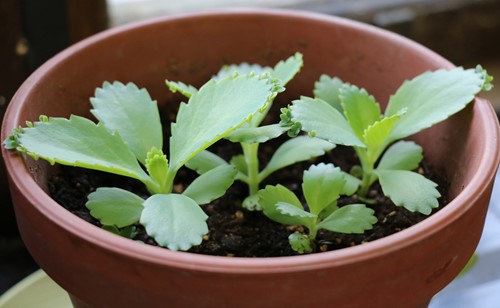
For plant containers, it doesn’t get more classic than a terracotta pot. This orange-brown clay has been a favorite among plant lovers for ages because of its durability, accessibility and aesthetic. However, because of their widespread popularity and availability some may consider a terracotta pot to be a boring or “basic” choice. While tastes differ from one plant owner to the next, there are actually some benefits to using terracotta pots completely aside from their looks. We’ll go over the benefits and drawbacks.
Terracotta Pot Pros
Indoor & Outdoor Use - Terra cotta is a common choice for outdoor container gardening and keeping indoor plants. This is because of the material’s excellent durability and the wide variety of shapes and sizes of containers available.
Highly Porous - Terracotta pots allow both moisture and air to pass through the walls. This helps wick away excess water from the soil that could cause fungus or root rot. It also makes them an ideal container for succulents, cacti and other plants that prefer drier soil.
Affordable - One of the key reasons for the popularity of terracotta pots is how inexpensive they are. Even in very large sizes you will typically spend far less on a terracotta container than you would on one made of ceramic or other materials. They are also frequently available at second-hand stores for an even lower price point and just as useful as when brand new.
Easy to Customize - Terracotta pots are easy to customize in a variety of ways. You can paint them to change the color and finish and their naturally matte surface makes them easy to write on with a permanent marker for quick labeling. If you are not a fan of the color or if you need to match other decor, it’s easy to paint and repaint terracotta pots to make them unique.
Terracotta Pot Cons
Changes Watering Schedule - The highly porous nature of terra cotta as a material is both a blessing and a curse. Depending on the type of plant inside the pot, the extremely efficient moisture-absorption may not be a benefit. For plants that need regular watering, a terracotta pot will require you to adjust your watering schedule. If you change a plant from one pot into another, you’ll have to change your watering habits accordingly—either water more often for terra cotta or less often for less porous materials.
However, as long as you know your plant’s specific needs and check soil moisture regularly, this shouldn’t cause too much of a problem. As mentioned above, terracotta pots are convenient for succulents and cacti that have greater risk of root rot or other damage caused from over-watering.
Not Cold-Resistant - Another thing to keep in mind about terracotta pots is your climate. If you’re using terra cotta containers outdoors, be very careful in cold weather. Some plants can survive frost and below-freezing temperatures, but the same can’t be said for their pots. Terra cotta can crack in the cold, making them less viable an option in climate zones with harsh winters. To mitigate this, you can always bring your plants indoors for the winter or even just the coldest nights. This will help the plants stay alive and keep the pots in good working condition.
About the Author
